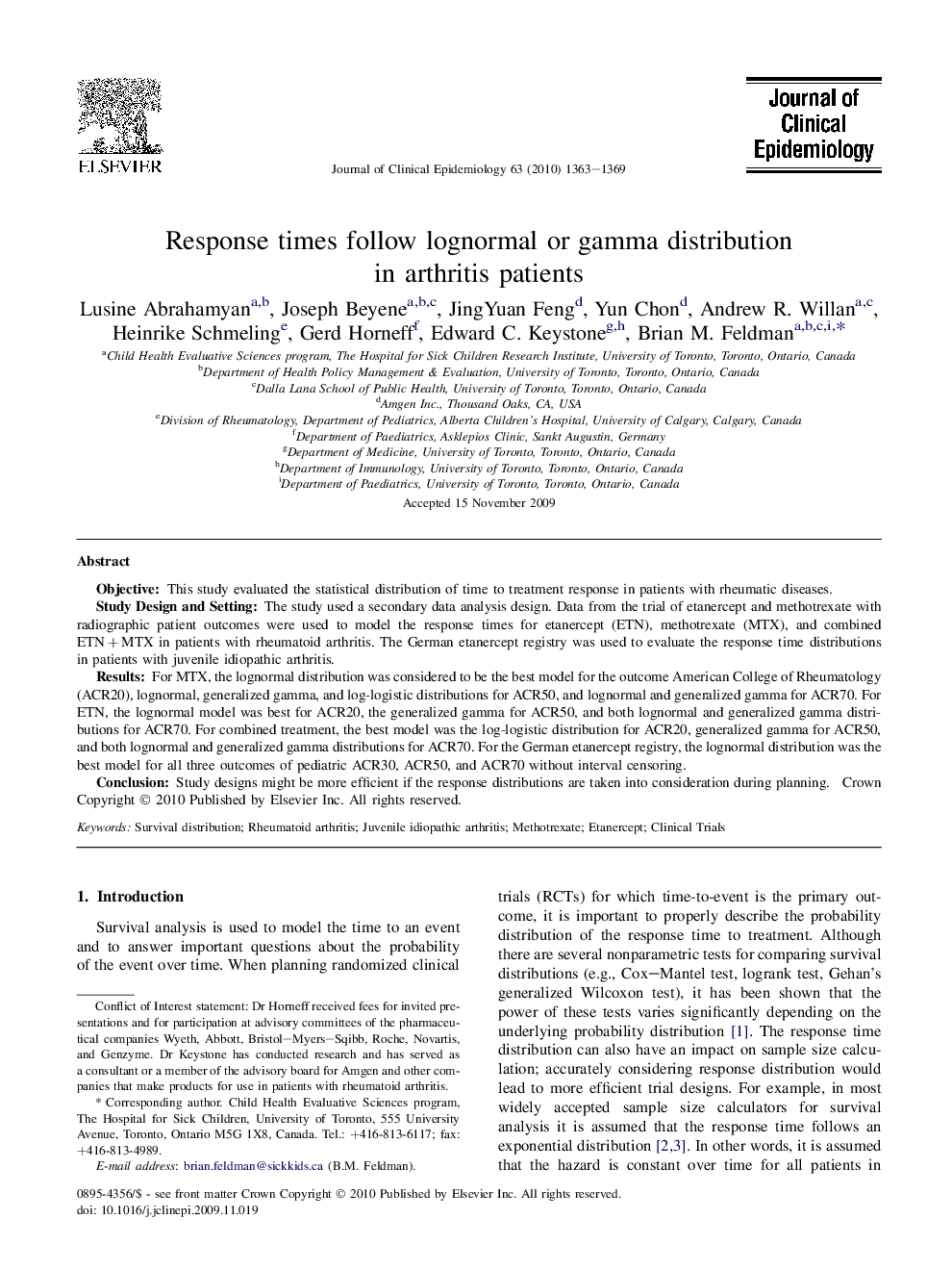| کد مقاله | کد نشریه | سال انتشار | مقاله انگلیسی | نسخه تمام متن |
|---|---|---|---|---|
| 1082789 | 950967 | 2010 | 7 صفحه PDF | دانلود رایگان |

ObjectiveThis study evaluated the statistical distribution of time to treatment response in patients with rheumatic diseases.Study Design and SettingThe study used a secondary data analysis design. Data from the trial of etanercept and methotrexate with radiographic patient outcomes were used to model the response times for etanercept (ETN), methotrexate (MTX), and combined ETN + MTX in patients with rheumatoid arthritis. The German etanercept registry was used to evaluate the response time distributions in patients with juvenile idiopathic arthritis.ResultsFor MTX, the lognormal distribution was considered to be the best model for the outcome American College of Rheumatology (ACR20), lognormal, generalized gamma, and log-logistic distributions for ACR50, and lognormal and generalized gamma for ACR70. For ETN, the lognormal model was best for ACR20, the generalized gamma for ACR50, and both lognormal and generalized gamma distributions for ACR70. For combined treatment, the best model was the log-logistic distribution for ACR20, generalized gamma for ACR50, and both lognormal and generalized gamma distributions for ACR70. For the German etanercept registry, the lognormal distribution was the best model for all three outcomes of pediatric ACR30, ACR50, and ACR70 without interval censoring.ConclusionStudy designs might be more efficient if the response distributions are taken into consideration during planning.
Journal: Journal of Clinical Epidemiology - Volume 63, Issue 12, December 2010, Pages 1363–1369